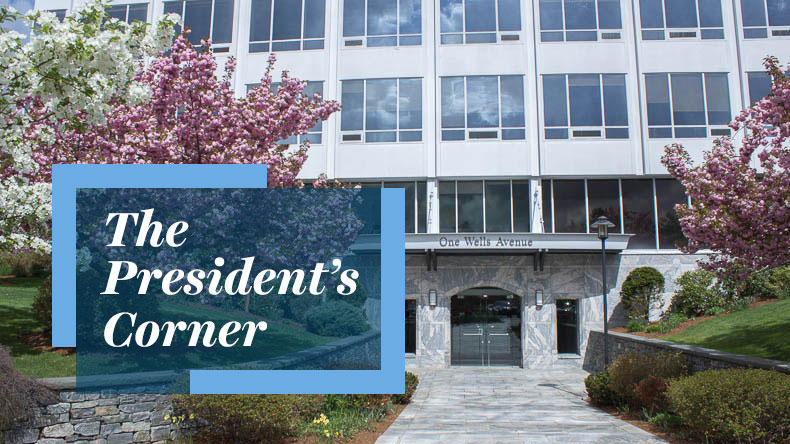Care in the time of Coronavirus

These days require more generosity of spirit from people who are, for the most part, pretty tapped out. After more than six months of social distancing, miserable baseball, and an overdose of takeout food it is difficult to find creative energy and forget about any enthusiasm for socializing. The anticipated relief of the summer was upset by an abundance of traffic from New Yorkers “working from home” at the Cape and parental outrage that plans for returning children to school only barely materialized, half-baked, in September. We are about to enter the flu season with an anticipated resurgence of COVID infection. Those who hoped that November would offer an opportunity to express deeply felt opinions about the government hear nightly that their vote might not be counted. Dinner reservations, gym workouts, airline travel, professional conferences, ballgames, movies, bowling, business lunches and, even, coffee with a friend are distant memories with no hint of their return.
A recent Kaiser Family Foundation poll found that 53% of Americans reported COVID-related stress, worry, anxiety and depression. This was higher than the 32% reported in March by the same group. A few weeks ago, I shared the report from the CDC that rates of anxiety and depression were 3 and 4 times larger this year than last with 25% of young people reporting recent suicidal ideation and folks of color and frontline workers suffering most. Isolation and loneliness seem to be key factors in an increase of substance use, affective distress and suicidal ideation. So, if you have been feeling burdened, moody, irritable, sleep-deprived or worse, you are in good company – but there are some steps to take.
Psychosocial interventions offer many opportunities to improve mood disturbances that range from the mild to the clinically significant. Depression and its variants (e.g., sadness, dysthymia, despair), for example, are understood by psychologists from several perspectives. Attachment researchers like John Bowlby and Mary Ainsworth emphasize the basic drive of human beings to be in relationship with each other. When connections to significant others are strained, broken or lost, human beings feel considerably distressed. The psychoanalyst Dr. Rene Spitz found that infants raised with their mothers in a prison environment developed nearly as confidently and as competently as those raised in traditional environments, where only two of twenty-six infants raised in an orphanage with little adult physical contact could walk or talk at three years, despite having their basic needs for survival met. There are many ways to accomplish this but reducing isolation and increasing compassionate connections in our work and social worlds are key steps to managing COVID’s emotional fallout.
Behaviorists Peter Lewinsohn and Neil Jacobson attribute lower levels of pleasant life events to a rise in depressed mood. In what resembles a hydraulic model, they suggest that mood covaries with the ability of individuals to access what they experience as pleasurable. Change in this equation is influenced by a shortage of supply, the rate of reinforcement or a change in the individual’s preferences – and it would not be difficult to create a long list of the rewarding experiences in our lives that have been rendered inaccessible by this pandemic. Improving mood requires self-reflection and, perhaps, some research to identify and engage more with appropriate pleasurable substitutes.
More than 50 years ago, psychologists Steven Meyer and Martin E.P. Seligman conducted a series of experiments with dogs that they placed in shuttle boxes. As we know, one side of the box delivered a shock to the dog who learned to terminate it by crossing a small barrier to the other side. However, when the dog was prevented from escaping (by a raised barrier or a harness) the animal had to endure the aversive stimulus. After several such exposures, trained dogs just laid down and took the shock… even when the barrier was eliminated. They had learned that nothing that they did could change the outcome. The experimenters called this phenomenon Learned Helplessness. Only when the dogs were repeatedly dragged across the reduced barrier to safety did they learn, again, that they could control their fate.
Not only dogs, but cats, mice, and humans extrapolate from negative learning experiences. When people judge noxious events as permanent, pervasive, or personal they feel hopeless and they can become depressed. On the other hand, those who look at the same experience as temporary, specific and external (due to factors beyond themselves) can maintain their emotional balance. Interventions on this level challenge people’s appraisal of experience and encourage a Socratic analysis of the validity of their conclusions: Ask, “What is the evidence that proves that this will last forever? …that this will always be the case? …that this is my fault?” Research finds that mood can be moved from pessimism to optimism by correcting how one interprets and reaches conclusions about adverse events.
These psychological theories, and several others, offer hope and direction that can mitigate the adverse emotional sequelae of this pandemic. But they require work. While not exclusive or independent, examining the quality and availability of important relationships with others; taking an inventory of events and circumstances that provide you with pleasure; and reviewing and revising, if needed, one’s appraisal of life events to make appropriate changes might not eliminate the virus, but will improve mood.
A good strategy for our clients and patients… and for ourselves and those whom we love.
- Tags:
- Around Campus
Topics/Tags
Follow William James College
Media Contact
- Katie O'Hare
- Senior Director of Marketing
- katie_ohare@williamjames.edu
- 617-564-9389
